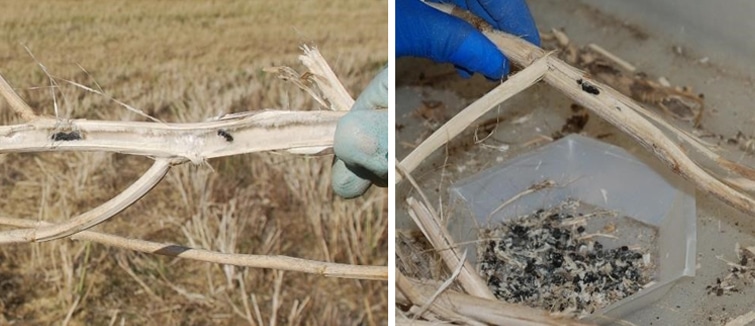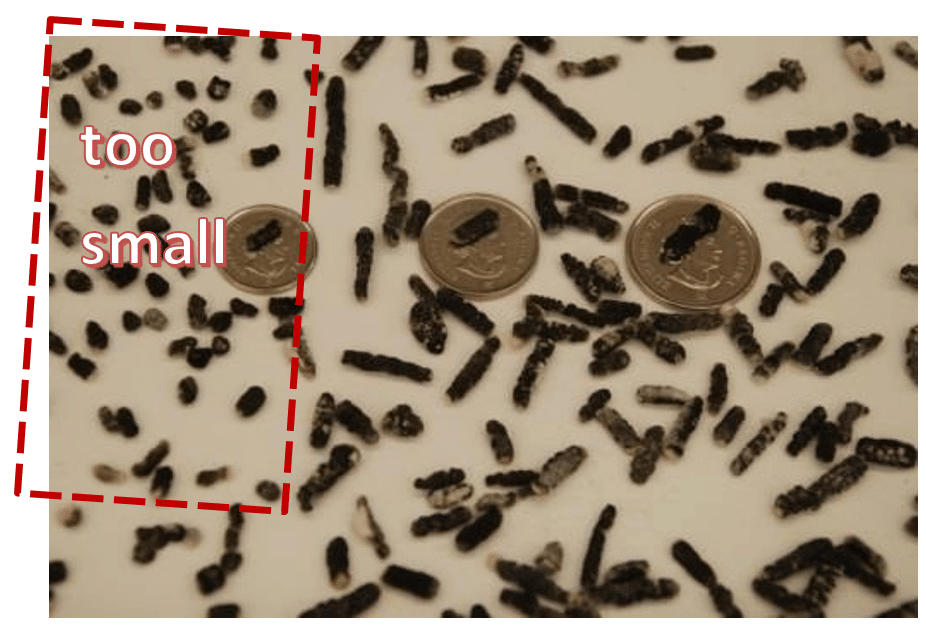Sclerotinia Resources
Make a sclerotia depot
- Background
- Collection of sclerotia
- Size sorting of sclerotia
- Preparing of sclerotia depots
- Vernalisation of sclerotia over winter
- Transfer depots to canola fields in the spring
- Observe apothecia development
- End of Growing Season
Background
Sclerotinia sclerotiorum can survive as sclerotia in the soil for up to five years. Sclerotia consists of dense whitish mycelium surrounded by a black rind which protects against the environment and degradation by microorganisms. Sclerotia in the top inch (2.5 cm) of the soil germinate with stipes that form apothecia on the soil surface. Apothecia are tan-coloured round disks (5 to 15 mm in diameter) containing millions of spores (Figure 1). Apothecia form when the soil has been close to field capacity (water held in the soil after the excess has drained away) for a period of time, and when the soil surface is shaded by the plant canopy. Mature apothecia puff spores into the air, and are productive for 1-2 weeks under wet weather conditions.
Sclerotinia spores are dispersed by air to neighbour plants, but need to grow on dead organic matter to gain enough strength to penetrate the epidermis. In canola crops, the spores colonize fallen petals and pollen that adhere to plant surfaces during rainy periods. The decision whether to apply a fungicide has to be made during the canola flowering stage and before symptoms can be seen, since all registered fungicide products work on contact (not systemically). A sclerotinia risk assessment tool can help with the fungicide decision and is available on the Canola Council of Canada’s website. Users are asked to assess six risk factors for each canola field in order to obtain a recommendation whether an application is likely to be economical. One important risk factor is observation of apothecia development in the field either from natural apothecia or in man-made sclerotia depots buried in the soil after seeding. The usefulness of these depots were successfully tested in both Denmark and Sweden. Below is a description on how to make a sclerotia depot to observe apothecia development to be used in the sclerotinia risk assessment tool.
Sclerotia depot advantage
Having one or more sclerotia depots in a canola field is an advantage because it allows observation of apothecia development in a know location, instead of using a lot of time searching for apothecia produced by sclerotia that may or may not be present in the field.
Collection of sclerotia
Canola, sunflower, lentil, bean and soybean are all susceptible to S. sclerotiorum. However, only sclerotia collected from canola should be used for making depots. Avoid sclerotia from sunflower since some will germinate with mycelium rather than apothecia. Also, avoid sclerotia from lentil, since they are generally too small. Sclerotia from bean and soybean can be used if necessary. It is easiest to collect sclerotia from canola fields that have more than 10% infection seen as bleached and tattered stems (Figure 2). Since sclerotia often accumulate at the bottom of the hollow canola stem, it is best to grasped the stem base to avoid breaking it and spilling the sclerotia on the ground. Debris from cleaning of canola seed is another source of sclerotia specially the larger/heavier fraction.
Size sorting of sclerotia
Select sclerotia that are 10 mm or longer with an intact black rind (Figure 3). Discard sclerotia that are broken, have a scratch rind, and those that are discolored (whitish, light brown or speckled black), since they are more vulnerable to the environment and microorganisms.
Preparing of sclerotia depots
Depots are made from nylon mesh (mosquito screen or heavy duty nylon fabric) which allows water to penetrate freely, and don’t break down when buried in the soil. The depots in Figure 4 were made from two pieces of white mosquito screen, where 50 (5 x 10) compartments were made with a heat sealer, after which a sclerotium was inserted into each pocket through a small slit. When each sclerotium is placed in a separate pocket, it is possible to count percent germination. Alternatively, these pockets can be made in a sewing machine using nylon thread. A simpler version is to enclose all 50 sclerotia in a single flat nylon pouch, but observation is reduced to no, few or many apothecia – which may be good enough in many cases.
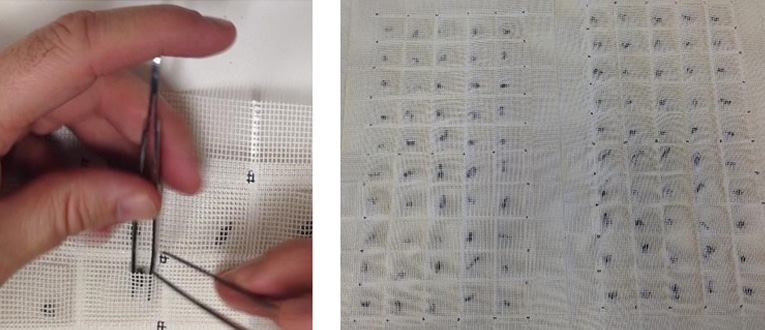
Vernalisation of sclerotia over winter
It is imperative that sclerotia receive vernalisation over the winter months by burring the depots in the soil in the fall before the first frost. Select a location where the soil will be undisturbed until the spring and not become waterlogged. Place each depot at 30 cm depth, and mark the location with a stake or tie a string to the depot leading to the soil surface.
Transfer depots to canola fields in the spring
Depots are moved from the vernalization location into selected canola fields after the crop is established around the 4-5 leaf stage. The depots are carefully buried at 1 inch (2.5 cm) soil depth between two rows of seedlings, which is important, because a good plant canopy is needed to shade the depot throughout the growing season. The soil on top and below the depot should be finely crushed and without clumps, and packaged tightly to ensure good contact with the sclerotia. Mark the depot locations with tall stakes.
Observe apothecia development
Observe apothecia development in the depots at least once a week from the time the canola is bolting to the end of flowering (Figure 5). Periods of rainfall favour apothecia development, so observations could be made to two times per week. Before leaving the depot it is important to push the surrounding plants over top to create shade.
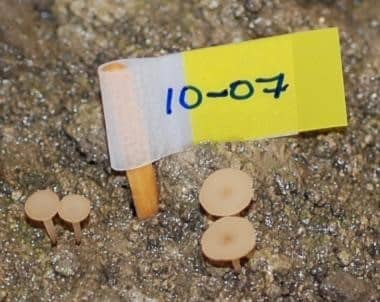
End of growing season
Remove and discard the depots anytime after the end of flower (Figure 6). In most cases, spores from a depot will not make a difference to the overall disease severity in the field. However, if there are more sclerotinia infected plants close to the depot than the rest of the field, they can be removed by hand and destroyed.
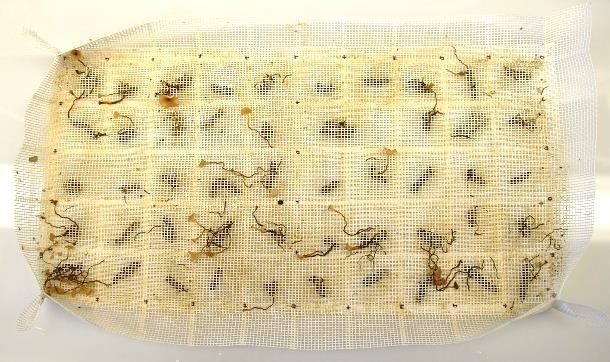
For questions, please contact
Lone Buchwaldt, Research Scientist, Agriculture and Agri-Food Canada, Saskatoon Research and development Centre, SK.
Email: Lone.Buchwaldt@agr.gc.ca
This tool was produced by the Canola Council of Canada and was funded in part by the Government of Canada under the previous Canadian Agricultural Partnership’s AgriScience Program, along with support from Alberta Canola, SaskCanola and Manitoba Canola Growers.



